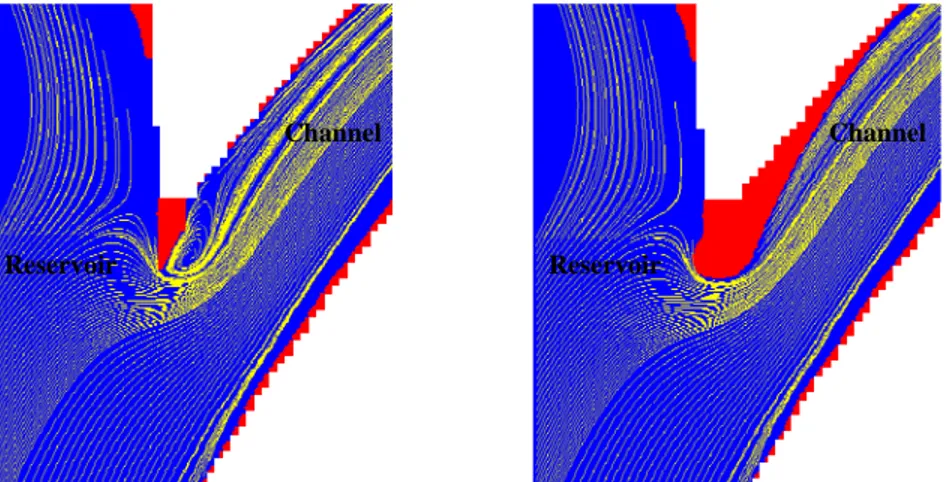Automatic shape optimization with GAs and a 2D free surface flow
solver
S. Erpicum
1, B.J. Dewals
1,2and M. Pirotton
11
Department ArGEnCo, Research unit of Applied Hydrodynamics and Hydraulic Constructions, University of Liege, Chemin des Chevreuils 1 Bât. B52/3+1, 4000 Liege, Belgium
2
Fund for Scientific Research F.R.S.-FNRS
e-mails: S.Erpicum@ulg.ac.be, B.Dewals@ulg.ac.be, Michel.Pirotton@ulg.ac.be
In the framework of hydraulic structures design, the optimization of the shape of the structures built to guide the water currents is still generally performed by the way of scale model studies. Indeed, the representativeness of the physical models, their reliability for all types of flows, providing that suited similarity laws are correctly applied, and their “as true as real” appearance make them the best tool to find the ideal geometry and to persuade decision makers of the usefulness of most of the shape adjustments.
Beside this classical and well known approach, the numerical flow modeling potentialities available today allow to perform all or a part of this optimization work by way of an automatic optimization procedure. More and more representative and accurate flow solvers are available for more and more complex applications and the continuous increase in computers performance enable their use to solve a large set of the hydraulic engineering practical problems.
The application of such numerical tools has been considered by the authors to automatically optimize the shape of a guide-wall at the entrance of a channel. The channel starts from a reservoir to feed a hydropower plant located downstream. As the inclination of the channel direction along the reservoir bank is not suited, swirls appear in the channel, downstream of the confluence. They cause head losses, perturb the velocity fields and are thus undesirable. In the scope of the channel entrance rehabilitation, carried out at the University of Liege by way of numerical and experimental studies, an automatic optimization of the shape of a guide wall on the left bank of the channel has been performed to assess the potentiality of the modeling system WOLF to solve a real hydraulic engineering case study.
The calculation has been performed by using a Genetic Algorithms based optimization tool coupled to the free surface flow solver WOLF2D. This 2D finite volume multibock model solves the conservative form of the classical shallow water equations together with a depth-integrated k-ε type turbulence model.
The calculations have been performed on a cluster of 12 processors to reach a satisfactory solution in less than 2.5 days (96 solutions tested).
Figure 1: Initial (left) and final solution (right) for the shape of the wall at the entrance of the channel with streamlines pattern
Reservoir
Channel
Reservoir
